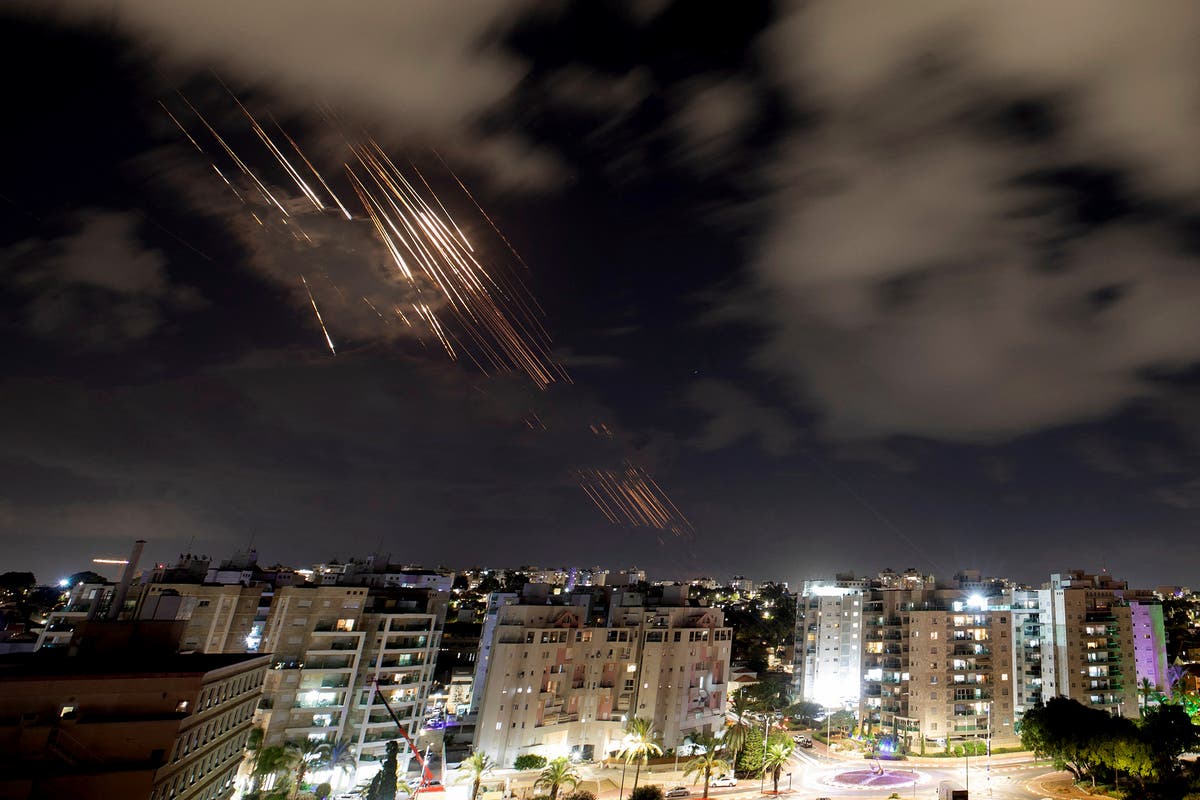A look back to an exchange of strikes in April suggests one possibility for what could unfold over the coming days.

- Oct. 1, 2024, 1:34 p.m. ET
In recent days, American officials have been assessing how a missile exchange between Iran and Israel could unfold. The most optimistic prediction has been a repeat of what happened in April, when the United States, Israel, Jordan and others intercepted almost all of the hundreds of missiles and drones fired toward Israel.
Afterward, President Biden urged Prime Minister Netanyahu of Israel to “take the win,” and Israel’s response was muted: While it fired at an air base in Isfahan, a city surrounded by some of Iran’s significant nuclear facilities, it avoided hitting the facilities themselves. The message, though, was clear: Next time, they could aim for assets Iran prizes.
The more extreme scenarios being explored this time, according to the American officials, involve Israel striking at the nuclear facilities, particularly at enrichment sites at Natanz, the heart of the Iranian program. It is at Natanz, north of Isfahan, that Iran has produced its near bomb-grade uranium, which American officials said could be converted to bomb-grade in days or weeks. It would take far longer to produce a nuclear weapon.
In April, Israeli officials said the Iranian attack involved 185 drones, 36 cruise missiles and 110 surface-to-surface missiles fired toward Israel. Most were launched from Iran, but a small number were fired from Iraq and Yemen. The weapons used in the barrage were more sophisticated than anything Israel had encountered during the first six months of fighting against Hamas in Gaza.
The attack caused minor damage at one military base and shrapnel seriously injured a 7-year-old girl from an Arab Bedouin community in southern Israel.
Israeli warplanes retaliated shortly after, firing missiles on Iran, according to Western and Iranian officials.
Grant Rumley, a former Pentagon official and senior fellow at the Washington Institute for Near East Policy, said Iran would likely replicate the April attack with a combination of drones, cruise missiles and ballistic missiles. “This time, it’s clear Iran wanted to avoid the failures of April by primarily using ballistic missiles, he said, “which travel much faster and can quickly overwhelm an air defense system.”
Unlike the April attack where Israel had days of warning to coordinate defenses with their allies in the region, Tuesday’s attack came with only hours of advance notice.
“As such, it’s hard to view this new attack as merely symbolic,” Mr. Rumley said. “It certainly looks like an escalation from Iran.”
David E. Sanger covers the Biden administration and national security. He has been a Times journalist for more than four decades and has written several books on challenges to American national security. More about David E. Sanger

 By The New York Times (World News) | Created at 2024-10-01 17:40:09 | Updated at 2024-10-01 19:28:12
1 hour ago
By The New York Times (World News) | Created at 2024-10-01 17:40:09 | Updated at 2024-10-01 19:28:12
1 hour ago



